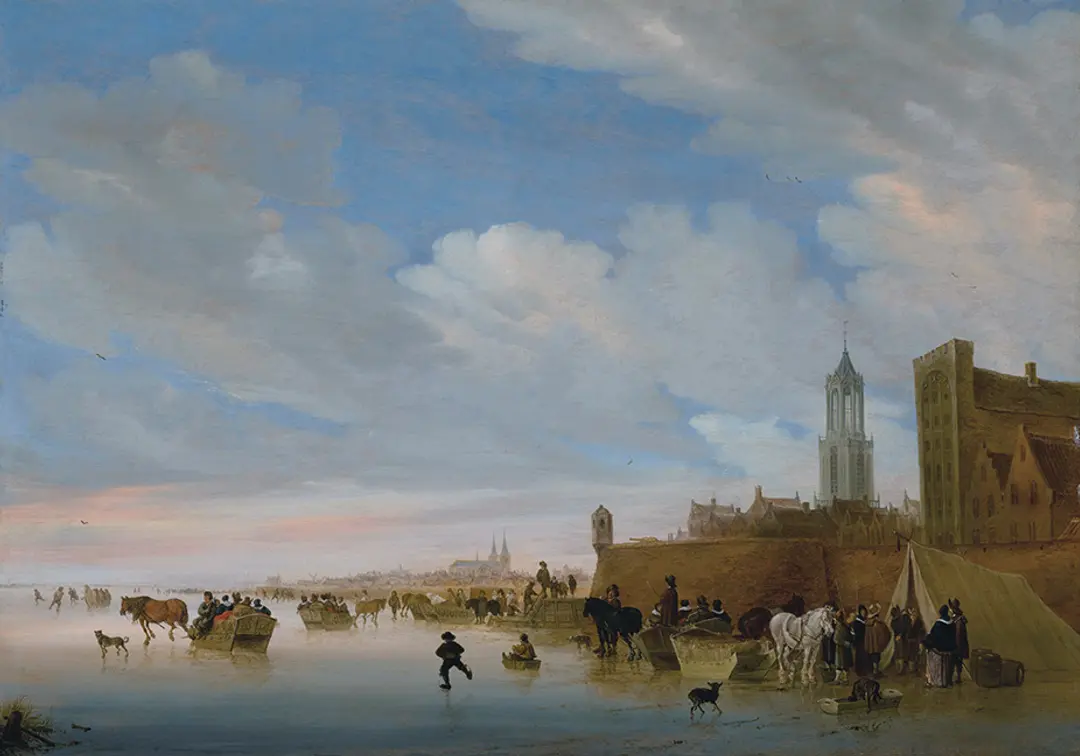News:
Rothko lawsuit lays bare the privacy versus provenance conflict
By Daniel Cassady
A recent case, relating to the sale of work by the Abstract Expressionist, centred on the tension between client confidentiality and transparency; the solution is far from simple
This winter lanscape by Salomon van Ruysdael was at the centre of a provenance dispute between Richard Green gallery and a client
In late January a Belgian gallery sued one in Manhattan for allegedly kneecapping the sale of a 1950 work by Mark Rothko, Untitled (Red, Yellow, Blue, Black and White, 1950), by refusing to divulge the name of the private collector to whom it had sold the painting in 2006.
In the complaint, the current owner of the work, Galerie Jacques de la Béraudière (GJB), claimed that major auction houses refused to sell the work because Edward Tyler Nahem Fine Art (ETN) would not reveal the name of the person who bought the painting through the Manhattan gallery in 2006, describing them only as “Private Collection, California”. GJB said the lawsuit reflected the “greater transparency” of the art industry today, but ETN’s lawyer, John Cahill, called it “frivolous.”
Less than two weeks later, GJB dropped the $10m lawsuit which it said was “filed as a result of a misunderstanding about the terms” of the painting’s 2006 sale by ETN. “Mr. Nahem had no obligation to divulge confidential client information, nor has he hindered the future marketing or sale of this painting in any way,” a statement released by both galleries reads. “Mr. de la Béraudière and Mr. Nahem have mutually agreed to move forward with their professional relationship in an amicable manner.”
Discretion required
Withholding the name of a buyer or seller of a work of art in order to protect client confidentiality is common practice. Had ETN given up the name of the mysterious Californian collector, it would have undermined confidence in the gallery and possibly opened it up to a lawsuit from the previous owner. As Pierre Valentin, the partner in charge of the Art & Cultural Property Law Group practice at the London-based firm Constantine Cannon, says: “In the art world there’s a constant tension between the legitimate need to assemble as good a provenance as possible with an individual’s right to privacy.”
When a gallery sells a painting, it very often has a fiduciary duty to the consigner, whose name cannot be revealed without their consent. What galleries can do is guarantee, or “warrant”, that the work comes from where it says it does. There are workarounds to protect a seller when their identity is kept private. Information can be disclosed confidentially to an auction house or shared with a third party on a restricted basis, with redacted invoices provided.
“In one sense, a work’s provenance is the full history of its ownership. But from a warranty point of view, in a transaction the provenance is what the invoice says it is,” says Chris Robinson, of the law firm Rottenberg Lipman Rich. A work’s provenance does not have to be complete or even fully transparent, but the buyer and the seller must come to an agreement about that provenance before the deal is done. When ETN sold the Rothko in 2006, the buyer accepted that the private collection in California was the legitimate seller—it was written on the invoice and therefore became part of the provenance.
Withholding information
“People customarily in the art market value and respect confidentiality, but that is becoming more and more eroded as a principle,” says Tim Maxwell of the London-based firm Charles Russell Speechlys. Recent anti-money laundering legislation in the UK has forced buyers to reveal their identities—the “art market professional” selling a work must now see the ultimate buyer’s ID, even if they are acting through an intermediary such as an adviser. Meanwhile, in February, the US Treasury Department released a report that said that, while the art market is vulnerable to shady dealings, government regulations are not needed—at least not yet.
In a separate case of undisclosed provenance in 2019, the London dealer Richard Green was sued by a client who claimed that information about the past sales of two Old Master paintings was “withheld”, leading him to pay too much for them.
Gary Klesch, an Anglo-American entrepreneur and investor, bought the two works of art at Tefaf Maastricht in 2018. He paid €3m for River Landscape with Fishers and a Cart (around 1600-1610) by Jan Bruegel the Elder, and €2m for Winter Landscape with Figures Skating and Sleigh-Riding Outside a Town, with the Utrecht Dom and Huis Groenwoude at Right, (around 1658) by Salomon van Ruysdael.
A year later, Klesch filed a claim in the London High Court saying that the Ruysdael had been sold for $882,500 at Sotheby’s in 2017, and the Breugel was sold by Lempertz in 2017 for €1.4m. Klesch claimed Richard Green had withheld this information and that, had he known of it, he would not have paid the prices he did.
Perhaps Klesch should have done his homework—a quick Google search would have revealed both auction prices. As the gallery’s director, Jonathan Green, said at the time (and as is reflected in the outcome of the Rothko case): “Where we bought the works is not relevant; as for any retailer we don’t have to reveal our sources.”


